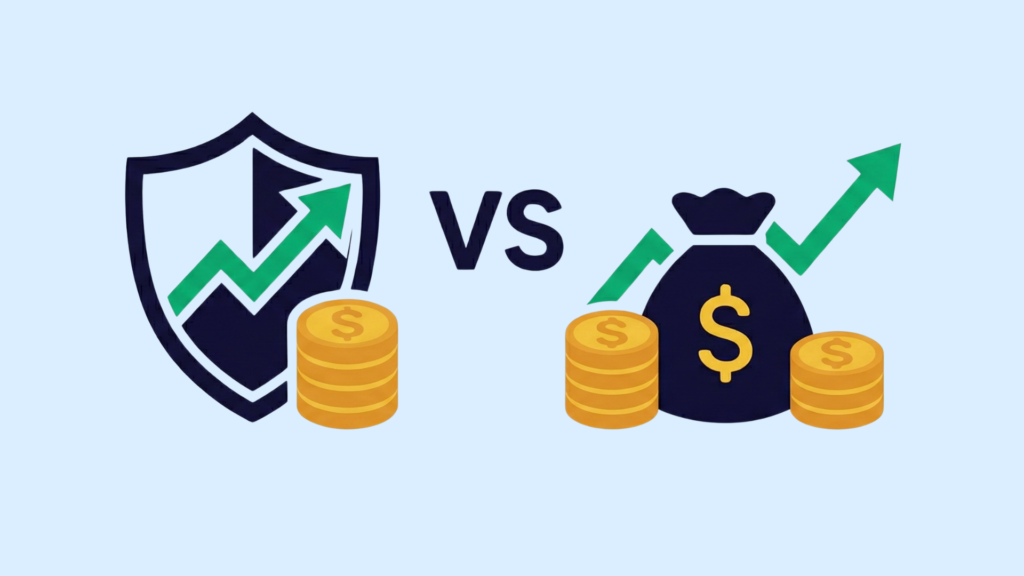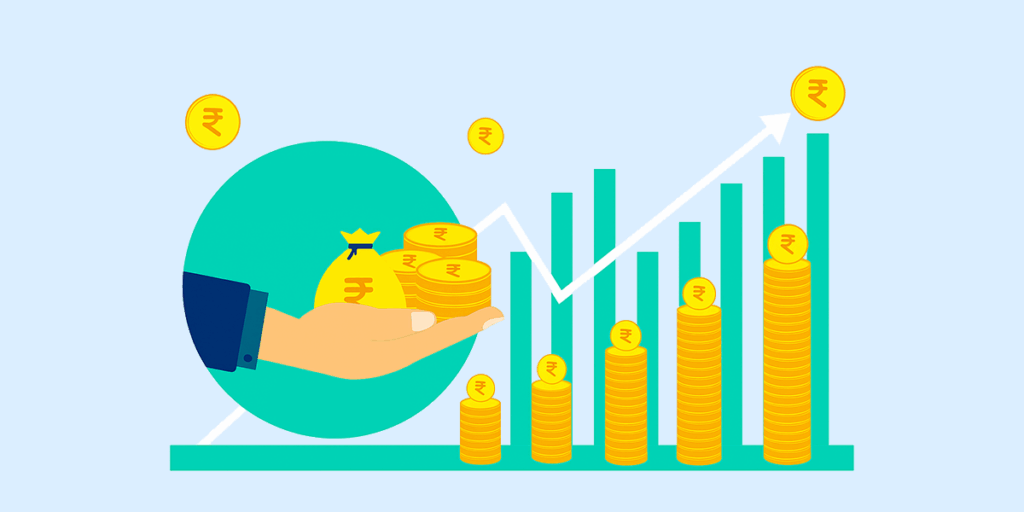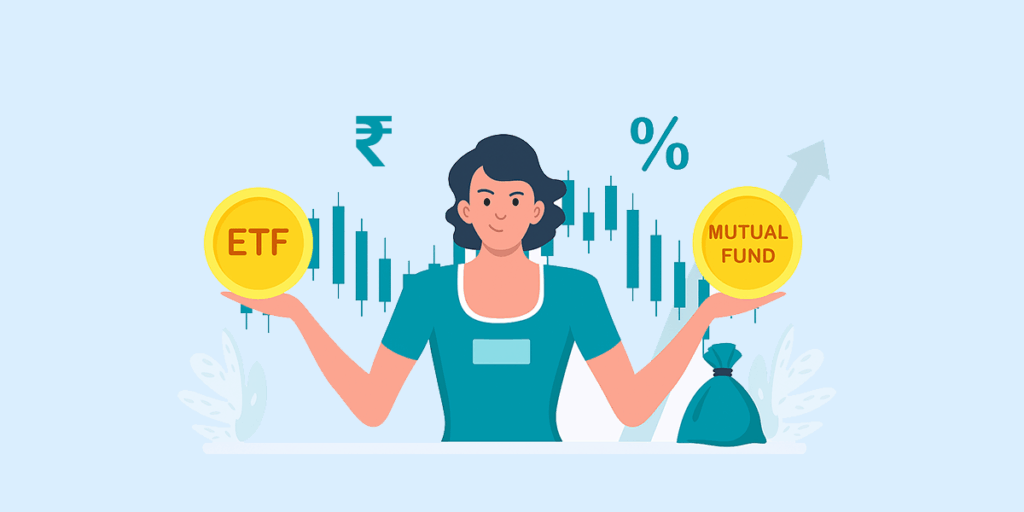When people talk about earnings from mutual funds, they often think only about capital appreciation—your investment growing in value over time. But that’s not the whole story. Many investors also receive dividends from mutual funds, which can provide a steady income stream in addition to long-term growth.
If you’ve ever wondered what a dividend in a mutual fund is, how it works, and whether mutual funds with dividends are the right choice for you, this guide will break it down in simple terms.
Understanding Dividends in Mutual Funds
A dividend in mutual funds is the portion of a scheme’s profits that the fund house distributes to its investors. These profits usually come from the fund’s investments in dividend-producing mutual funds, like stocks of companies that pay regular dividends or from interest earned on debt instruments.
How Dividend Differs from Capital Appreciation
- Dividends are cash payouts (or credited units) given to investors at regular intervals. They don’t necessarily mean your investment is growing; they’re just part of the fund’s profits distributed.
- Capital appreciation, on the other hand, refers to the rise in the Net Asset Value (NAV) of your mutual fund units over time. This happens when the value of the fund’s investments increases.
So, while high dividend mutual funds may give you periodic income, growth-focused funds reinvest profits to maximise long-term NAV gains.
Dividend Option vs. Growth Option in Mutual Funds
When you invest in a mutual fund, you generally get two plan choices:
- Dividend Option: The fund pays out profits at regular intervals (monthly, quarterly, or annually). It is best suited for investors looking for monthly dividend payout mutual funds or those who prefer a steady cash flow.
- Growth Option: No dividends are paid out. Instead, all earnings are reinvested back into the scheme. These are suitable for long-term investors who want wealth creation over time rather than regular income.
If you’re looking for a regular income, the Dividend Option with Daily SIP at ₹11 a day allows you to start small and receive periodic payouts, which can be helpful for managing cash flow without requiring a large initial investment.
How Do Mutual Funds Pay Dividends?
Dividends in mutual funds aren’t automatic or guaranteed; they are declared by the Asset Management Company (AMC) when the fund generates distributable surplus. Here’s how the process works:
- Dividend Payout Mechanism: The AMC decides if a scheme has enough realised profits to distribute as dividends. Once declared, the dividend is credited directly to the investor’s bank account or reinvested as additional units, depending on the option chosen.
- Frequency of Dividends: Different schemes follow different schedules:
- Monthly dividend mutual funds pay regularly, offering investors predictable income.
- Others may distribute dividends quarterly, semi-annually, or annually.
- The frequency depends on the fund’s investment objective and earnings.
- Sources of Dividend Distribution: Dividends come from the surplus generated through:
- Company dividends are earned by the fund’s equity holdings.
- Interest income from debt instruments.
- Capital gains realised from buying and selling securities
Types of Dividend Paying Mutual Funds
Not all mutual funds distribute dividends the same way. Here are the major categories:
1. Equity Mutual Funds with Dividends
- Invest primarily in dividend-paying companies.
- Suitable for investors seeking exposure to stock markets along with periodic payouts.
- Some examples would be large-cap or dividend yield equity funds.
2. Debt Mutual Funds with Dividends
- Generate dividends mainly from interest earned on bonds, government securities, and debt instruments.
- Often chosen by conservative investors who want more stability compared to equities.
3. Balanced/Hybrid Mutual Funds that Pay Dividends
- These combine equity and debt exposure.
- Investors benefit from both potential capital appreciation and periodic dividend income.
- A mutual fund that pays dividends in this category provides a balanced approach to growth and income.
Benefits and Drawbacks of Dividend Mutual Funds
Dividend mutual funds appeal to investors who value regular payouts, but they come with certain limitations. Let’s break it down:
Pros of Mutual Funds with Dividends
- Regular Income: Investors, especially retirees, prefer high-dividend mutual funds as they provide a steady source of income.
- Flexibility: Dividends can either be withdrawn as cash or reinvested to buy more units.
- Diversification: Equity and debt funds offering dividends allow exposure to different asset classes.
Cons of Mutual Funds with Dividends
- No Guaranteed Returns: Dividends depend on the fund’s performance and AMC’s decision; they’re not fixed.
- NAV Reduction: After a dividend payout, the fund’s Net Asset Value (NAV) decreases, impacting long-term compounding.
- Taxation: Dividends are taxed as income at the investor’s slab rate, reducing the net benefit.
H2: Best & Top Dividend Paying Mutual Funds in India
When it comes to dividend-producing mutual funds, investors often look for consistency, past performance, and how frequently payouts are made. While dividends are not guaranteed, some funds have built a track record of rewarding investors regularly.
Below are some of the best dividend-paying mutual funds in India (as of September 2025) that investors commonly track:
| Fund Name | AUM (₹ Cr) | Expense Ratio | 5Y CAGR | Key Portfolio Allocation |
| ICICI Prudential Dividend Yield Equity Fund | 5,779.14 | 0.57% | 30.95% | Large Cap 78.67%, Private Banks 19.38% |
| Franklin India Dividend Yield Fund | 2,348.88 | 1.24% | 26.58% | Large Cap 50.77%, Power Generation 14.38% |
| Aditya Birla Sun Life Dividend Yield Fund | 1,432.45 | 1.43% | 24.01% | Large Cap 63.38%, IT Services & Consulting 16.29% |
| LIC MF Dividend Yield Fund | 639.31 | 0.75% | 23.81% | Large Cap 47.63%, Private Banks 14.19% |
| UTI Dividend Yield Fund | 3,793.60 | 1.48% | 22.79% | Large Cap 65.99%, Private Banks 17.6% |
Monthly Dividend Mutual Funds
Some investors prefer monthly dividend mutual funds (also called monthly dividend payout mutual funds) for regular cash flow. These funds declare dividends more frequently, making them attractive to retirees or those seeking a steady income. However, monthly payouts reduce the NAV, so they may not be the best for long-term compounding.
How to Identify Good Dividend-Paying Mutual Funds
If you’re evaluating top monthly dividend-paying mutual funds or even quarterly/annual ones, here are some practical points to check:
- Consistency of dividend history: Has the fund paid dividends regularly in the past?
- Expense ratio: Lower costs can improve net returns.
- Portfolio quality: Look for funds investing in stable, dividend-yielding large-cap companies.
- Fund manager expertise: Consistent performance often depends on active management quality.
Dividend vs Growth Option – Which Should You Choose?
When investing in mutual funds, you’ll often face the choice between the dividend option and the growth option. Here’s how they differ:
| Aspect | Dividend Option | Growth Option |
| Payouts | Regular income through dividends | No payouts; profits reinvested |
| NAV Impact | NAV falls after dividend distribution | NAV grows steadily over time |
| Best Suited For | Retirees, investors seeking income | Long-term wealth builders |
| Wealth Creation | Limited, as payouts reduce compounding | Higher potential due to compounding |
| Taxation | Dividends are taxed as per the slab | Tax on capital gains at redemption |
Who Should Pick the Dividend Option?
- Retirees or those seeking a regular income.
- Investors who prefer cash flow rather than waiting for long-term growth.
Who Should Stick to the Growth Option?
- Young investors or long-term wealth creators.
- Those comfortable with market volatility and aiming for capital appreciation.
Did you know?
US ETFs (Exchange Traded Funds) offer a great opportunity for investors looking to diversify their portfolio with international exposure. With Appreciate, you can now access these ETFs easily, benefiting from the growth of US-based companies. Investing in US ETFs can be a strategic way to tap into global markets, adding stability and potential growth to your investment strategy.
FAQs
What is a dividend in a mutual fund, and how is it different from stock dividends?
A dividend in a mutual fund is the payout distributed from the fund’s realised profits to investors. Unlike stock dividends, which are declared by individual companies, mutual fund dividends come from the overall portfolio returns managed by the AMC.
Are monthly dividend mutual funds safe for long-term investors?
Monthly dividend mutual funds can provide regular income, but they are not always the best option for long-term wealth creation. Since dividends reduce the NAV, growth funds are often better for long-term compounding.
How do I find the best dividend-paying mutual funds in India?
You can look at fund performance reports on platforms like AMFI, Value Research, or Moneycontrol to shortlist the best dividend-paying mutual funds. Consider past consistency, expense ratio, and portfolio strength before investing.
Do high dividend mutual funds guarantee regular income?
No. Even high dividend mutual funds don’t guarantee payouts. Dividends depend on the fund’s profitability and the AMC’s discretion, which means the amount and frequency can vary.
Is dividend reinvestment a better option than payout?
It depends on your goals. If you want regular cash flow, go for payout. If your aim is wealth creation, dividend reinvestment can be better as it allows compounding over time.
Disclaimer
The information provided in this article is for educational and informational purposes only. It should not be considered as financial or investment advice. Investing in stocks involves risk, and it is important to conduct your research and consult with a qualified financial advisor before making any investment decisions. The author and publisher are not responsible for any financial losses or gains that may result from the use of this information.























